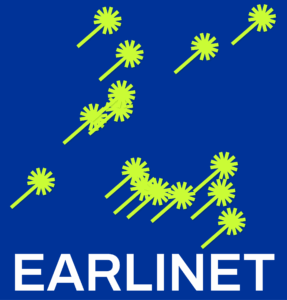EARLINET
EARLINET is a coordinated network of stations that make use of advanced lidar methods for the vertical profiling of aerosols. At present, the network includes 27 stations distributed over Europe
The network performs measurements systematically on the base of a fixed scheduling. A rigorous quality assurance program is applied both for instruments and evaluation algorithms, and a standardised data exchange format is used.
All the network stations perform measurements at three fixed dates a week, allowing the collection of unbiased data. Lidar observations are performed on a regular schedule of one daytime measurement per week around noon, when the boundary layer is usually well developed, and two night time measurements per week, in low background light conditions, in order to perform Raman extinction measurements. Further observations are addressed to monitor special events such as Saharan dust outbreaks, forest fires, photochemical smog and volcano eruptions.
EARLINET started also correlative measurements for CALIPSO since 14 June 2006. These correlative measurements are performed at each station in coincidence with CALIPSO overpasses. EARLINET correlative measurements are performed at stations located within 80 km from the overpasses and additionally at the lidar stations which are closest to the actually overpassed site. If a multi-wavelength Raman lidar station is overpassed then also the next closest multi-wavelength Raman lidar station performs a measurement. Each correlative measurement lasts for a minimum of 1 hour centered around the overpass time; longer records of measurements are performed for special case studies (Saharan dust layers, forest fires, long range transport, etc.).
Special care has been taken to assure data of highest possible quality. Therefore all network stations participated in intercomparisons both at instrument and algorithm levels with standardised procedures. The data quality control establishes a common European standard for routine quality assurance of lidar instruments and algorithms and ensures that the data products provided by the individual stations are permanently of highest possible quality according to common standards and are thus usable by the research community in a homogenous manner.
All new EARLINET partners must perform and pass the data quality check before their data can be considered as EARLINET quality-assured data.
EARLINET measurements started in May 2000 and are still continuing; up to now the EARLINET database represents the largest database for the aerosol distribution on a continental scale. At present, it contains more than 25000 aerosol profiles in terms of extinction, backscatter and lidar ratio. Lidar ratio data have been retrieved from simultaneous and independent lidar measurements of aerosol extinction and backscatter.
All the files are divided in different categories related to regular and special observations:
- Climatology (regular measurements according the scheduled three times a week)
- Cirrus
- Diurnal cycles (diurnal and seasonal cycle of aerosols in the boundary layer)
- Volcanic eruptions (observations of the Etna eruption events in 2001 and 2002, and of the Eyjafjallajökull in 2010)
- Forest fires (observations of large forest fires)
- Photosmog (observations of photochemical smog episodes in large cities)
- Rural/urban (nearly simultaneous measurements at pairs of stations that are sufficiently close to minimize the effect of large scale patterns, but sufficiently apart to reflect the differences in the surrounding: urban versus rural or pre-rural)
- Saharan dust (special observations of Saharan dust outbreaks following the alert system based on dust forecast)
- Stratosphere (stratospheric aerosol observations and detection of smaller scale features of stratospheric aerosol distribution and its interdependence with dynamics and heterogeneous chemistry)
- CALIPSO (correlative measurements in coincidence of the CALIPSO overpasses).

